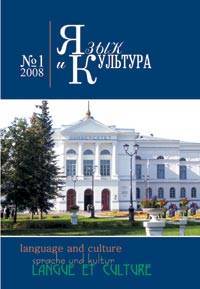Translation memory as a tool for optimization of translator's work
Optimization and automation of the working process are among the most important factors which define the level of global progress and the provided work quality. Written translation is also a service which defines the dynamics of a company's progress, personal development, partner relations, commercial agreements and other key aspects of daily professional life. Taking into account the development of companies, partnerships and enterprises internationally, the labor market needs translators who can translate both quickly and qualitatively as well as those who are ready to master technologies for accomplishing such quick and qualitative translation. Due to the demand for highly qualified translators in the labor market, there is a demand for the qualitative professional training of such specialists within the framework of higher education. This way, training to use such CAT tools (Computer-assisted translation) as "translation memory" is becoming increasingly important and in-demand. These tools are found to be particularly important for scientific and technical translation. Consequently, it is becoming urgently necessary to teach the use of CAT tools within the framework of technical and scientific translation. To illustrate how efficient and quickly a translation can be accomplished with the aid of translation memories and in order to prove the necessity of their application within the studying framework, an experimental study was held where it was shown that the application of translation memory provides both an increase in translation quality and translation acceleration when translating in the technical and scientific field. Provided in the article are both qualitative and quantitative data which demonstrate the higher efficiency of translators who use translation memory in comparison with those who do not. To illustrate this, an experiment was held among students of the fourth year of a language Faculty, where a control group translated without a translation memory program and an experimental group translated with the translation memory program SDL Trados. Moreover, the results of an analysis of translation texts and their quality assurance by means of the TQI index in both groups are given. The TQI index was used as an objective measure of results of texts' translation quality assurance. In this connection, it was concluded that the work productivity of the experimental group was higher. In addition, conducting an experiment with the application of translation memories allows the determining of software drawbacks as well as weak points of the program during the optimization of a translator's work.
Keywords
перевод, качество перевода, память переводов, CAT-устройства, индекс TQI, translation, translation quality, translation memory, CAT, TQIAuthors
| Name | Organization | |
| Chemezov Y.R. | Tomsk State University | yan_house@mail.ru |
References

Translation memory as a tool for optimization of translator's work | Yazyk i Kultura – Language and Culture. 2017. № 40. DOI: 10.17223/19996195/40/23
